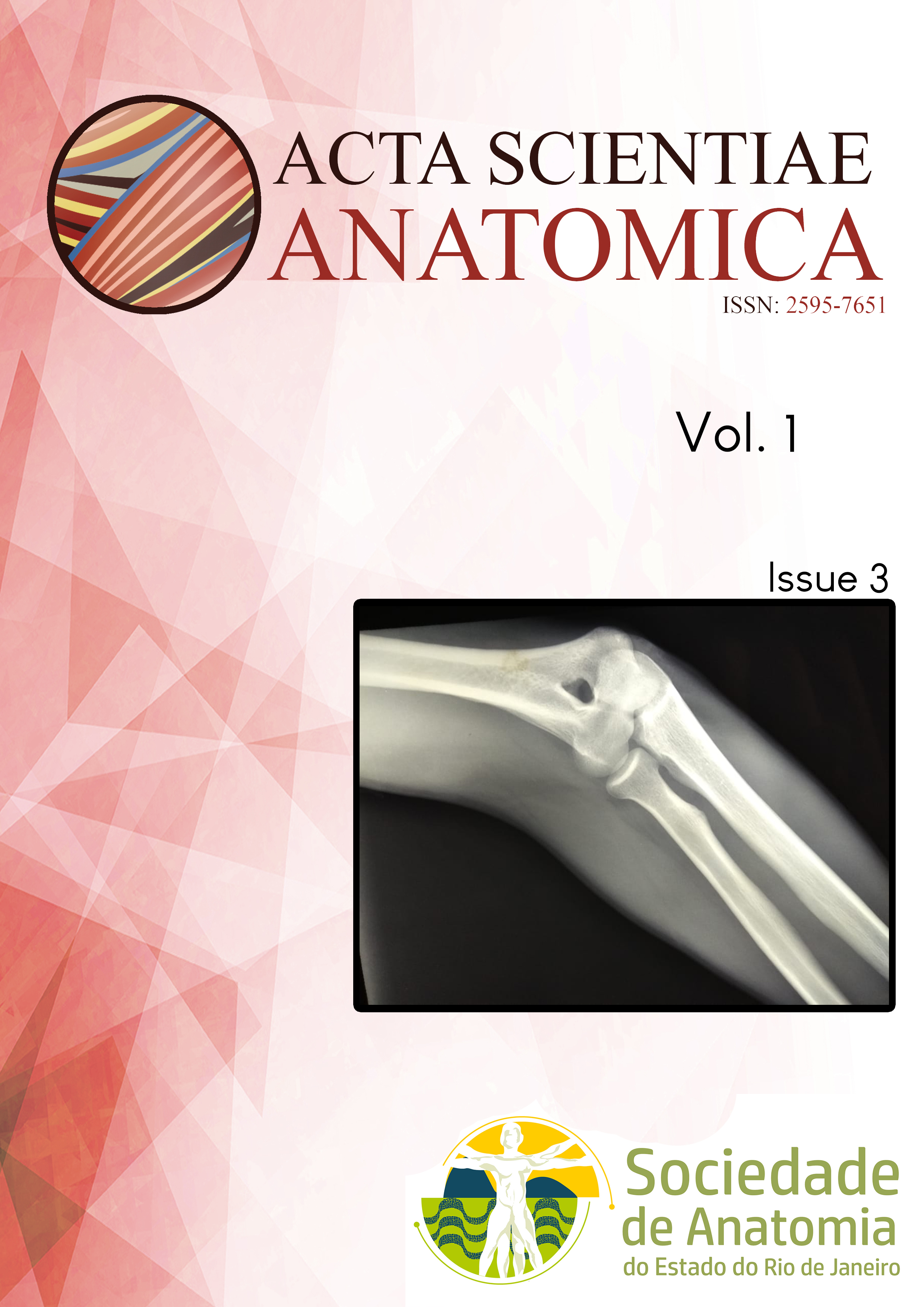A supernumerary variation of the pharyngeal muscles - a case report
DOI:
https://doi.org/10.65053/asa20190302Keywords:
pharynx, pharyngeal muscles, superior constrictor muscle, variationsAbstract
The pharynx is a complex region and it partly possesses a muscular architecture. The classical textbooks divide them into the constrictors (superior, middle and inferior) and elevators (palatopharyngeus and stylopharyngeus) muscles, which are very significant to pharyngeal physiology and its main function: swallowing. Despite that, little is known regarding the anatomical variations of these muscles. We present a rare case in which a longitudinal and bilateral bundle arose from the basilar portion of the occipital bone near the pharyngeal tubercle and went towards the fibers of the inferior constrictor muscle and blended with them. We believe that this is an aberrant slip of the superior constrictor muscle, although there is no sufficient data to support this hypothesis. Similar variations have been described, but after thorough research, we believe that the one described herein was not previously reported. Variations of the pharyngeal muscles may lead to alterations in its function, thus, should be further studied and reported.
References
1. Latarjet M, Liard AR. Anatomía Humana. 4 ed. Madrid: Editorial Medica Pan-Americana; 2011.
2. Testut L, Latarjet A. Tratado de Anatomia Humana. 8th ed. Barcelona: Salvat; 1958.
3. Tubbs RS, Shoja MM, Loukas M, editors. Bergman's Comprehensive Encyclopedia of Human Anatomic Variation. New Jersey: Wiley Blackwell; 2016.
4. Goss CM, editor. Gray's anatomy of human body. 29th ed. Philadelphia: Lea & Febiger; 1973.
5. Patnaik U, Nilakantan A, Shrivastava T. Anatomical variations of the external branch of the superior laryngeal nerve in relation to the inferior constrictor muscle: cadaveric dissection study. J Laryngol Otol. 2012;126(9):907-12.
6. Sakamoto Y. Classification of pharyngeal muscles based on innervations from glossopharyngeal and vagus nerves in human. Surg Radiol Anat. 2009;31(10):755-61.
7. Adams A, Mankad K, Offiah C, Childs L. Branchial cleft anomalies: a pictorial review of embryological development and spectrum of imaging findings. Insights Imaging. 2016;7(1):69-76.
8. Schoenwolf G, Bleyl S, Brauer P, Francis-West P. Larsen's Human Embryology. 5th ed. Philadelphia: Churchill Livingstone; 2014. 576 p.
9. Clavé P, Shaker R. Dysphagia: current reality and scope of the problem. Nat Rev Gastroenterol. 2015;12(5):259-70.
10. Leite TF, Chagas CAA, Pires LAS, Cisne R, Babinski MA. Pharyngoesophageal Obstruction on the Killian-Laimer Triangle by Zenker’s Diverticulum: Case Report and Clinical Significance. Gastroenterology Res. 2015;8(6):316-9.
11. Stokely SL, Peladeuau-Pigeon M, Leigh C, Molfenter SM, Steele CM. The Relationship Between Pharyngeal Constriction and Post-swallow Residue. Dysphagia. 2015;30(3):349-56.
12. Aslam M, Vaezi MF. Dysphagia in the Elderly. Gastroenterol Hepatol (N Y). 2013;9(12):784-95.
13. Edwards BA, White DP. Control of the pharyngeal musculature during wakefulness and sleep: implications in normal controls and sleep apnea. Head Neck. 2011;33 Suppl 1:S37-45.
14. Shimada K, Gasser RF. Variations of the pharyngeal raphe. Clin Anat. 1988;1(4):285-94.
Downloads
Published
Issue
Section
License
Copyright (c) 2025 Acta Scientiae Anatomica

This work is licensed under a Creative Commons Attribution-NonCommercial-ShareAlike 4.0 International License.
This journal publishes open-access articles under the Creative Commons Attribution 4.0 International (CC BY 4.0) license. This permits use, sharing, adaptation, distribution, and reproduction in any medium or format, as long as appropriate credit is given to the authors and the source, a link to the license is provided, and any changes are indicated. License: https://creativecommons.org/licenses/by/4.0/








